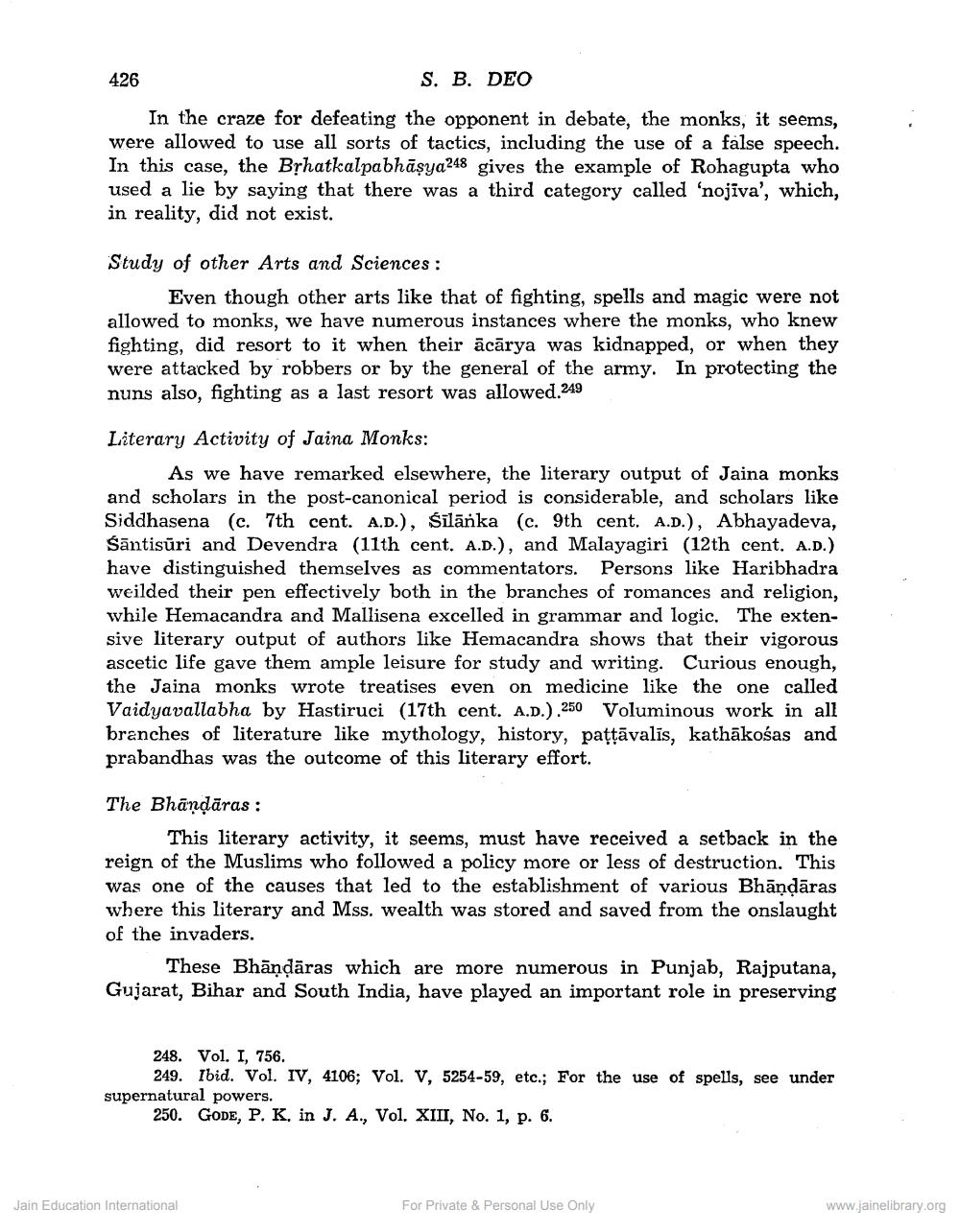________________
426
S. B. DEO In the craze for defeating the opponent in debate, the monks, it seems, were allowed to use all sorts of tactics, including the use of a false speech. In this case, the Brhatkalpabhāşya248 gives the example of Rohagupta who used a lie by saying that there was a third category called 'nojiva', which, in reality, did not exist.
Study of other Arts and Sciences :
Even though other arts like that of fighting, spells and magic were not allowed to monks, we have numerous instances where the monks, who knew fighting, did resort to it when their ācārya was kidnapped, or when they were attacked by robbers or by the general of the army. In protecting the nuns also, fighting as a last resort was allowed.249
Literary Activity of Jaina Monks:
As we have remarked elsewhere, the literary output of Jaina monks and scholars in the post-canonical period is considerable, and scholars like Siddhasena (c. 7th cent. A.D.), śilānka (c. 9th cent. A.D.), Abhayadeva, śāntisūri and Devendra (11th cent. A.D.), and Malayagiri (12th cent. A.D.) have distinguished themselves as commentators. Persons like Haribhadra weilded their pen effectively both in the branches of romances and religion, while Hemacandra and Mallisena excelled in grammar and logic. The extensive literary output of authors like Hemacandra shows that their vigorous ascetic life gave them ample leisure for study and writing. Curious enough, the Jaina monks wrote treatises even on medicine like the one called Vaidyavallabha by Hastiruci (17th cent. A.D.).250 Voluminous work in all branches of literature like mythology, history, patřāvalis, kathākośas and prabandhas was the outcome of this literary effort.
The Bhāndāras :
This literary activity, it seems, must have received a setback in the reign of the Muslims who followed a policy more or less of destruction. This was one of the causes that led to the establishment of various Bhāndāras where this literary and Mss. wealth was stored and saved from the onslaught of the invaders.
These Bhāņdāras which are more numerous in Punjab, Rajputana, Gujarat, Bihar and South India, have played an important role in preserving
248. Vol. I, 756.
249. Ibid. Vol. IV, 4106; Vol. V, 5254-59, etc.; For the use of spells, see under supernatural powers.
250. GODE, P. K in J. A., Vol. XIII, No. 1, p. 6.
Jain Education International
For Private & Personal Use Only
www.jainelibrary.org




